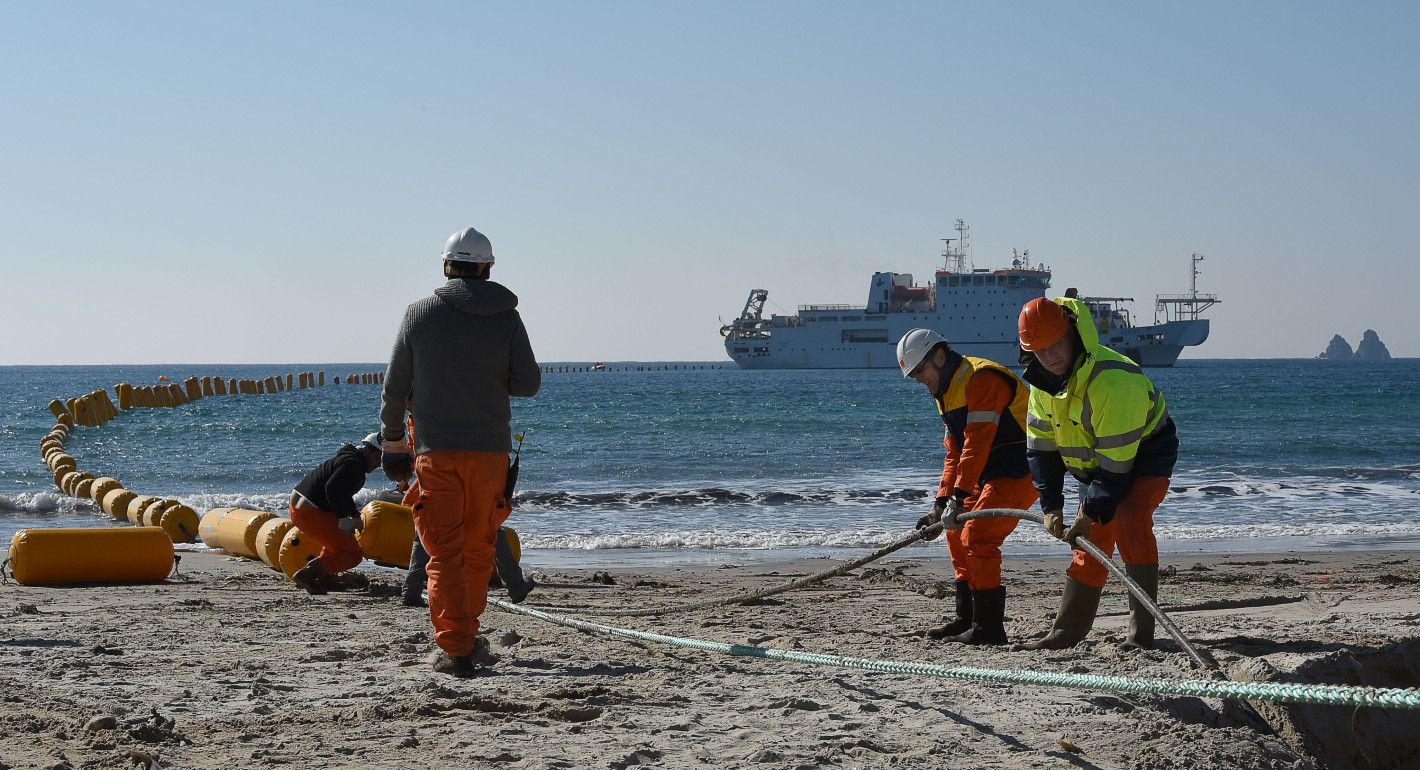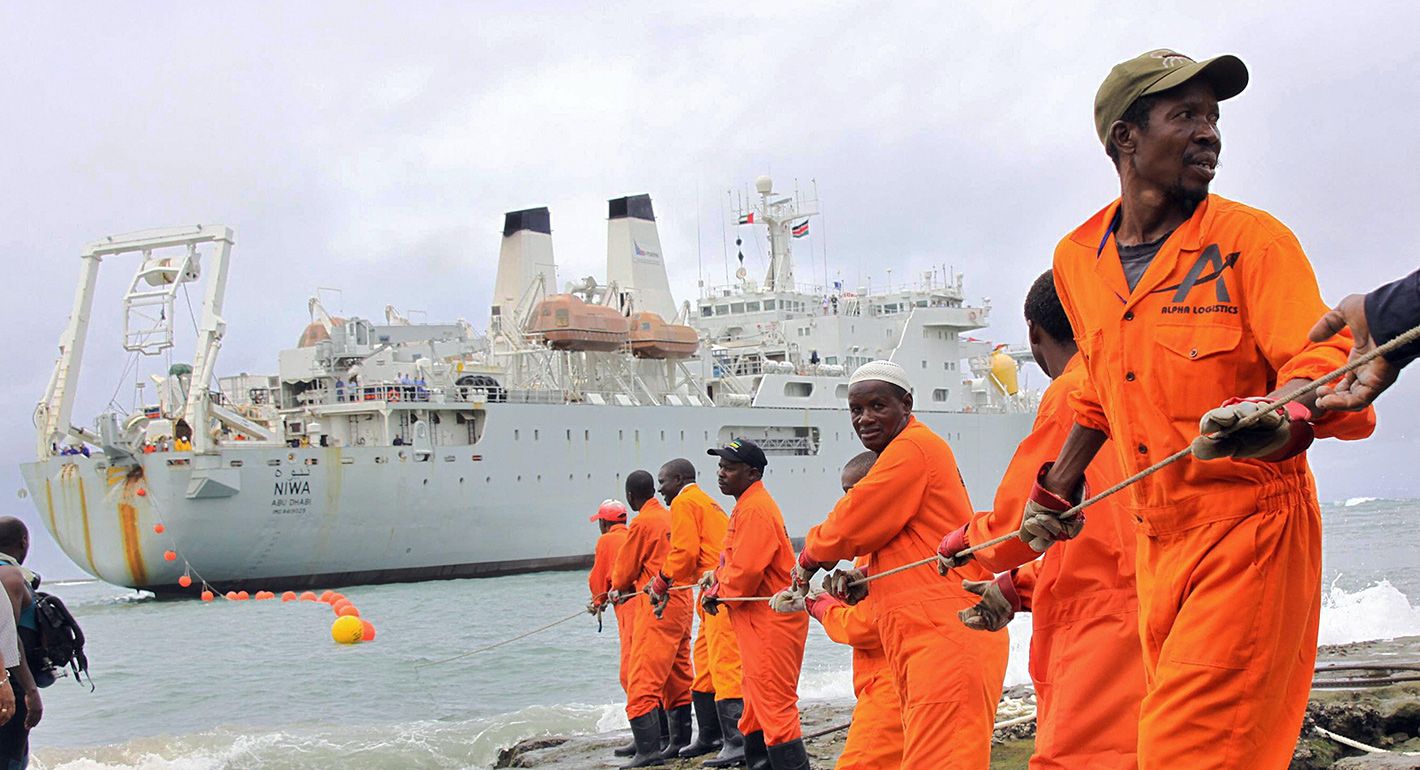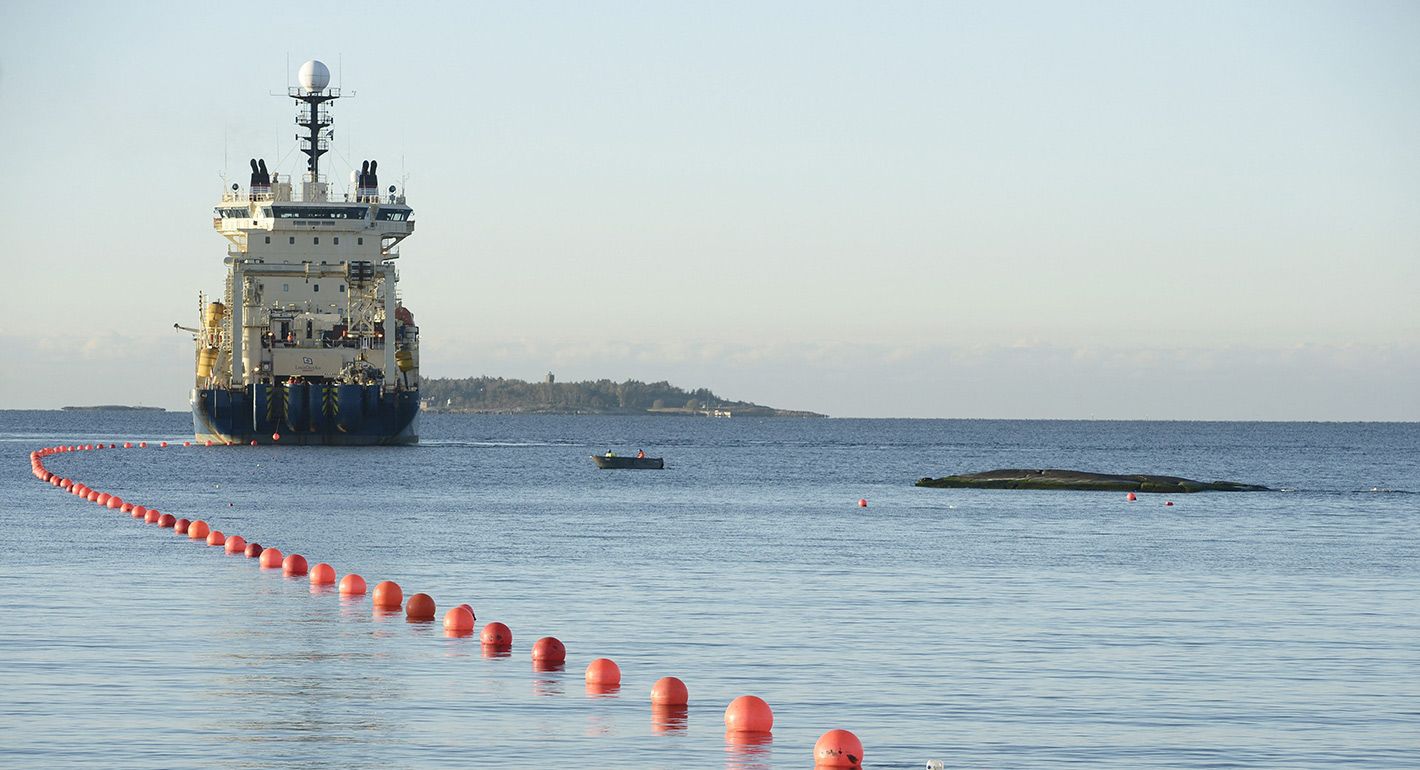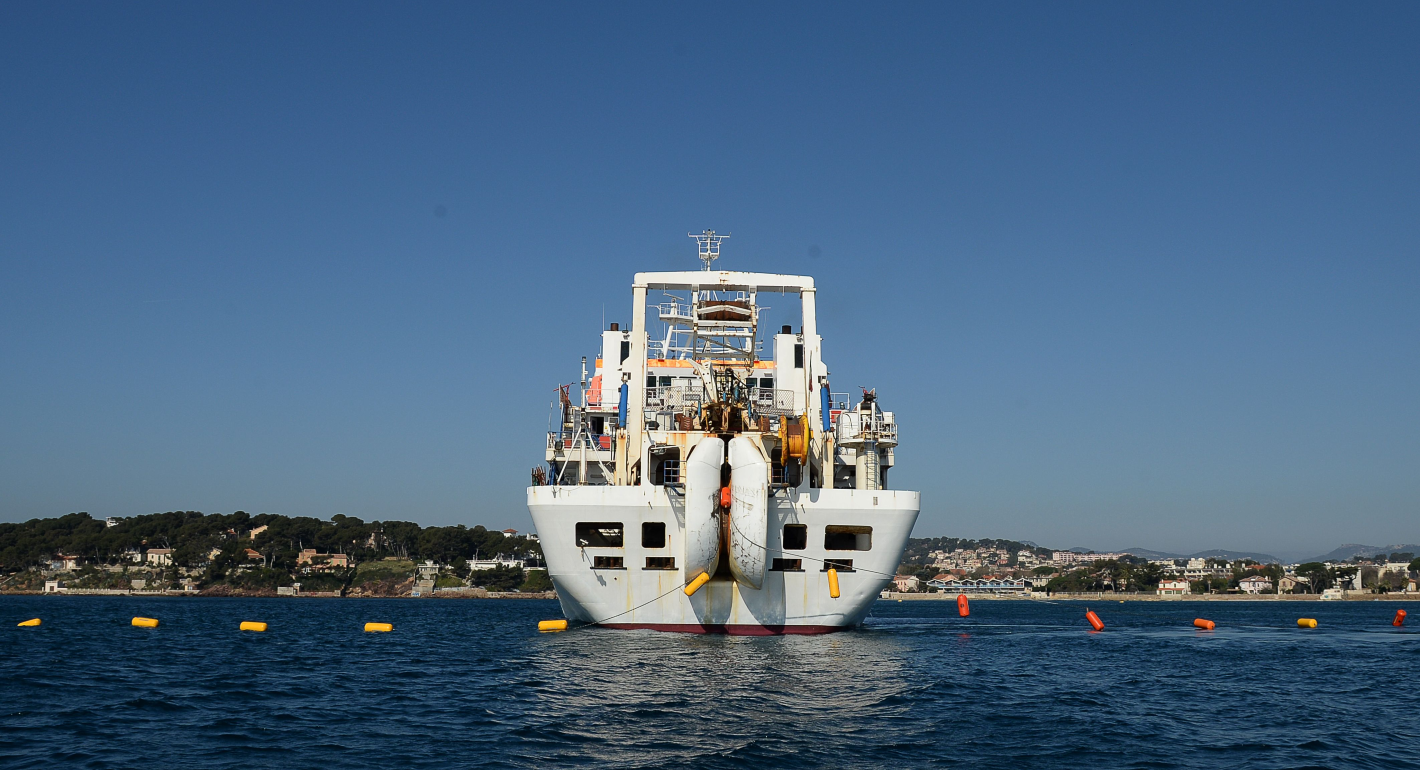For decades, the world has relied on the vast web of subsea data cables sprawled across the ocean floor to stay digitally connected. Governments, militaries, businesses, and individuals see the nearly 600 fiber optic communication cables—also known as subsea communication cables, undersea cables, or submarine cables—as essential for daily life, with demand only growing due to AI and other technology advancements. But until recently, subsea cables have flown under the radar in terms of popular and policy attention.
Two main factors explain this shift. First, a series of incidents across the globe has exposed the vulnerability of undersea infrastructure to potential sabotage. Second, subsea cables have become an increasingly critical battleground in the broader U.S.-China technology rivalry.
The impact of subsea cable cuts, whether intentional or not, and how major power competition shapes the governance and security of subsea infrastructure varies from region to region. Over the past year, a team of Carnegie researchers has explored how these dynamics are shaping subsea cable investment, deployment, repair, and resilience in Africa, Europe, and Southeast Asia.
One of the most-suggested solutions to address cable damage is to increase redundancies and diversify cable routes. Yet building new cables is expensive and labor-intensive, and countries around the world are also being forced to navigate pressures from the United States and China regarding which companies can and should be trusted to build these new systems. Many are aiming to strike a balance between increasing security for critical subsea infrastructure and streamlining regulatory processes to ease expansion of cable networks.
Each piece from the Geopolitics of Subsea Data Cables series explores trade-offs and dynamics in Africa, Europe, and Southeast Asia and provides tailored recommendations for regional actors to navigate this era of undersea tensions. Despite the geographic differences, all three emphasize the need for better coordination and increased dialogue between governments and industries in these regions.
Africa: Safeguarding the Continent’s Digital Future
Subsea data cables have revolutionized internet access and affordability by boosting connectivity across the continent, as well as to global telecommunications networks. And more cables are on the way: Africa’s burgeoning digital economy is increasing demand for affordable, fast, and secure internet connections. The dominant companies, all U.S.-based, have taken note, with existing and planned cables from Meta, Google, and Amazon all making landfall on the African coast.
Even with thirty-seven of Africa’s thirty-eight coastal states connected to at least one subsea cable, a lack of diverse routes raises the risk of internet outages when disruptions occur. This risk is particularly high for countries that only have one cable landing, including Guinea, Guinea Bissau, the Gambia, Liberia, and Mauritania. Furthermore, of the approximately eighty cable repair ships scattered across the globe, only three serve the African continent—and only one of those vessels is based at an African port. The lack of adequate repair capacity creates additional challenges when there are multiple cable faults, especially on separate sides of the continent.
Like Europe and Southeast Asia, Africa lacks a single regulatory regime for its subsea cables. Rather, each coastal country formulates its own laws and policies regarding undersea infrastructure in its respective jurisdiction. Countries also vary in their licensing fees for new subsea cables, creating a disparate ecosystem for new cable investment—which is a prerequisite for desperately needed increased redundancies and resilience. At both national and regional levels, African countries need to adapt global best practices regarding cable protection and ensure the emergence of a cohesive plan to promote and safeguard the continent’s digital future.
Europe: Waking Up to the Underseas Threat
Europe’s first real undersea sabotage alarm bells rang in September 2022, with the explosion of the Nord Stream 2 pipeline that brings gas from Russia to the continent. In February 2024, several Red Sea cables were severed by the anchor of a cargo ship sunk by Houthi militants, causing a 25 percent reduction in internet traffic between Europe and Asia. Then, in late 2024 and early 2025, a string of near-monthly cable disruptions in the Baltic Sea finally prompted European policymakers to spring into action.
In the months following these incidents, officials at the national, EU, and NATO levels introduced measures to bolster the security of subsea cables. These measures included increased surveillance in the North and Baltic Seas and improved interagency and regional cooperation to reduce reaction times to potential cable damages.
Beyond direct threats to the physical security of Europe’s undersea infrastructure, growing tensions over cable ownership and cybersecurity are forcing the continent to reconsider its position in the U.S.-China technology rivalry. Although Europe has traditionally sided with the United States, concerns are rising over the dominance of U.S. tech companies—including Amazon, Google, and Meta—in cable ownership and investment, especially as their leadership increasingly aligns with U.S. political interests.
Although Europe lacks a large-scale cloud provider that rivals those in the United States, it is still not an idle player in this realm. More subsea cables connect to Europe than to any other continent. France’s Alcatel Submarine Networks is the current global market leader in subsea cable installation, and several European firms operate sizeable fleets of cable repair ships. In addition to better securing its subsea infrastructure, Europe must invest in its existing strengths and seek out opportunities for allied business cooperation if it wishes to continue to compete globally in the subsea domain.
Since the publication of our paper, the EU has published a new plan on cable security, which lists several of our recommendations as policy priorities. In addition, we have written follow-up commentary arguing for European countries to expand their global cable repair capabilities and update inadequate domestic and international legal regimes to protect against future damage to subsea infrastructure.
Southeast Asia: A Critical Cable Node
Southeast Asia is a crucial hub for transnational cables that link the rest of the world. Demand for greater connectivity at faster speeds, attributed to both an increase in mobile-first data usage and the rapid expansion of new data centers, will raise the already significant number of cables servicing the region. However, Southeast Asia’s location makes its subsea cables uniquely vulnerable. Its maritime geography and underwater topography, coupled with the region being home to some of the world’s busiest shipping lanes, increase the chances of damage from accidental anchor drags. To illustrate the point, in February 2023, all five of the cables connected to Vietnam experienced partial or total damage—resulting in a 75 percent loss of the country’s data flow. Heightened seismic activity, particularly within the Ring of Fire, also threatens subsea cables with every earthquake or volcanic eruption.
Countries in the region rely on existing repair capacities and are exploring building out their current cable networks. Fragmented policies around waterway access and other regulatory restrictions have historically caused severe delays for repair ships to access and fix cable faults, but geopolitical strains are increasingly complicating cable laying, maintenance, and repair decisions.
In addition, countries such as Vietnam have faced severe pressure from U.S. officials to use non-Chinese suppliers. Yet national security agreements between the U.S. government and U.S. cable suppliers—to protect primarily U.S. interests—also have serious implications for regional countries plugged into these cables. Additionally, although U.S. tech giants’ interest in supplying new cables undoubtedly provides an investment and connectivity boon for Southeast Asia, market consolidation of internet infrastructure spanning cables and data centers carries its own risks.
Shared Challenges, Shared Opportunities
Governments around the world have recognized both the critical role of the physical infrastructure that underlies modern digital life and the vulnerabilities faced by such infrastructure. Despite their seemingly archaic nature in an era of AI and cloud computing, subsea cables remain economically significant and, for developing nations, an essential foundation for digital transformation. While policymakers can agree on the general notion of cable criticality, security, and resilience, a shared interpretation of what these elements look like in practice remains missing.
In our papers, we highlight recommendations that governments can take to better protect and secure their subsea cables in the short term. Recognizing these cables as critical infrastructure, promoting interagency discussions and public-private partnerships, and revising outdated and inadequate legal frameworks for cable protection are all places to start. Any national or regional steps can have global implications, raising the necessity for cross-border dialogue and collaboration.
Threats to subsea cables and the implications of individual cable faults will continue to vary among countries and regions—but the underlying importance of these cables will not. In a new age of great power competition and hybrid aggression, where states use unconventional tactics below the traditional threshold of war against their adversaries, the ways in which policymakers and businesses approach the protection of digital infrastructure will continue to change. Such dynamics and developments merit continued research and analysis, and these three studies are meant to serve as regional starting points for doing so.











